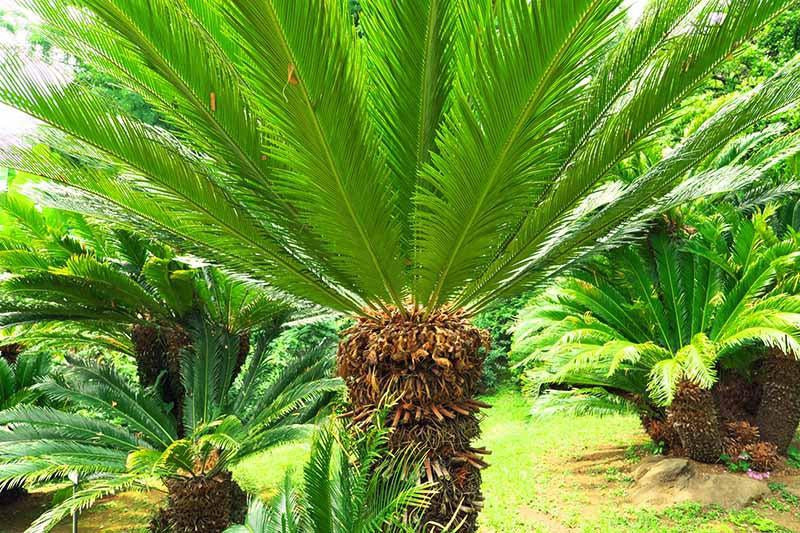
How To Care For Your Sago Palm Bonsai Tree
Cycas Revoluta Bonsai Care
About The Sago Palm Bonsai Tree
The sago palm, or King sago palm is native to Japan - including the Ryukyu Islands.
Though not a true palm, this ancient tree grows glossy, symmetrical fronds that look just like a tropical palm.
It is a remarkably slow grower, but still can grow to be 20 feet or more in the wild (since it can survive for hundreds of years.)
Placement
Like most palm trees, a Sago Palm bonsai should remain indoors to prevent damage from freezing.
Even though this hardy palm can survive a brief below-freezing wind, it shouldn't be outside when the temperatures are below 50 degrees.
It will survive and adapt to low light, high light, and even low water living conditions. You can treat this bonsai tree like a cactus.
This bonsai tree can go outdoors whenever the temperature is warm enough.
Watering
Never let the soil completely dry out. Whenever the soil seems dry, thoroughly water your tree until the water runs clear from the bottom. In the growing season, this can be daily.
If you need help, a good moisture meter will guide you.
Humidity
Whenever your sago palm bonsai tree is inside, including for the winter, using a humidity tray is recommended. It will prevent the water from running on the floor, and can help keep the tree somewhat moist in the dry season.
Fertilizing
Since your Sago Palm bonsai is in a small pot, and not the ground, it needs nutrients. A slow release (pellet based) fertilizer is perfect for this, and can be added sparingly every 1-2 months during the growing season.
Pruning & Trimming
You don't really have to do much pruning or trimming on a sago palm. It's very easy.
Repotting
Repotting must be performed periodically on your bonsai, Sago Palm included, when its root system has filled the pot. If you can clearly see the roots coming out of the bottom of the pot, it’s time to repot your bonsai.
Generally, this means every 2-3 years for a deciduous tree and every 4-5 years for an evergreen.
Repotting should be done in mid-summer, when the tree is at it’s least fragile state.
If you keep your sago palm indoors all year, it will likely never need to be repotted.
To repot, the palm bonsai tree, along with all of its soil, should be removed from the pot. From there, you can trim away no more than 1/3rd of the root mass (1/4th is preferred.)
Then you can repot the tree in the same pot, or give it a newer / bigger pot to thrive in.
After repotting, your Sago Palm bonsai should be thoroughly watered.
Diseases, Insects & Other Pests
Your Sago Palm bonsai can be treated for pests like a normal Sago Palm tree. Just remember, your tree is miniature and will need a much smaller and more gentile dose of treatment.
Would you like to SEE these instructions as a series of videos, instead of just reading them?
If you want to demystify the art of bonsai so you can become a master of this relaxing hobby in just a few days, you need the right training. I’ve built a digital video course that mixes classroom style instructional videos with “over the shoulder” style training videos to make bonsai simple to understand, and easy to start.
In this digital video course, you'll discover:
- How to create a bonsai tree from scratch that will help you experience true inner-peace and calm.
- How to keep your tree collection alive and well so you can enjoy their benefits for a lifetime.
- How to shape your bonsai like a professional, allowing you to design it however you like.
- What bonsai tools you really need and how to use them so you’ll never buy a tool that you don’t need again.
- How to cultivate your own trees so you never have to buy another tree from a store again.
- How to use all of this to create your own bonsai collection so you enjoy this relaxing hobby for the rest of your life.


